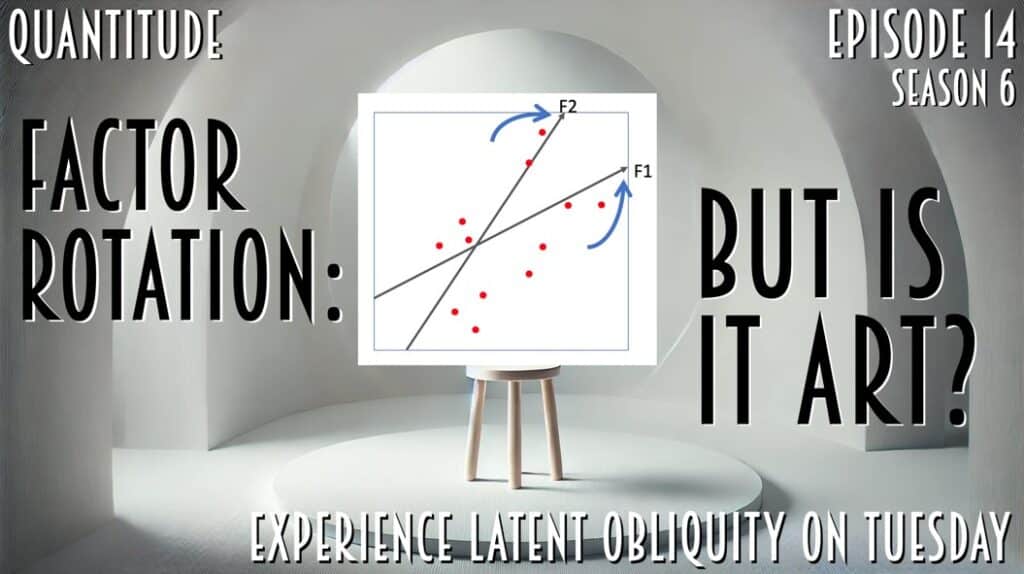In this week’s episode Greg and Patrick invoke the very personal interpretation of modern art as a framework for thinking about the exceedingly cool topic of rotation in exploratory factor analysis. Along the way they also discuss Venice Beach, haystacks, drug fronts, being insufferable, ignoramuses, .22’s and stop signs, weak pivots, honking factors, pooping out matrices, the Gulf of America, twitchy eyeballs, big fat zeros, obliquity, and Extortomax.
Related Episodes
- S5E06: Advanced Factor Structures
- S3E15: Heywood You Help Me With Negative Residual Variances in EFA?
- S3E03: Principal Components Analysis is your PAL
- S1E22: Factor Analysis: The Good, The Bad, & The Ugly
Suggested Readings
Abdi, H. (2003). Factor rotations in factor analyses. Encyclopedia for Research Methods for the Social Sciences. Sage: Thousand Oaks, CA, 792-795.
Browne, M. W. (2001). An overview of analytic rotation in exploratory factor analysis. Multivariate Behavioral Research, 36, 111-150.
Cudeck, R., & O’Dell, L. L. (1994). Applications of standard error estimates in unrestricted factor analysis: Significance tests for factor loadings and correlations. Psychological Bulletin, 115, 475–487.
Jennrich, R. I., & Sampson, P. F. (1966). Rotation for simple loadings. Psychometrika, 31, 313-323.
Kaiser, H. F. (1958). The varimax criterion for analytic rotation in factor analysis. Psychometrika, 23, 187–200.
Kaiser, H. F. (1959). Computer program for varimax rotation in factor analysis. Educational and Psychological Measurement, 19, 413-420.
Lawley, D. N., & Maxwell, A. E. (1963). Factor transformation methods. British Journal of Statistical Psychology, 17, 97–103.
Oswald, F. (2022). Rotate It Yourself! Retrieved from https://orgtools.shinyapps.io/RotateFactorsYourself

